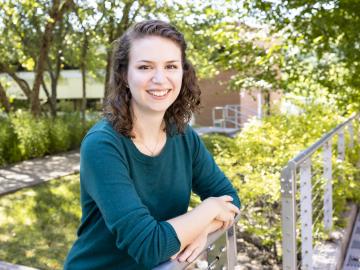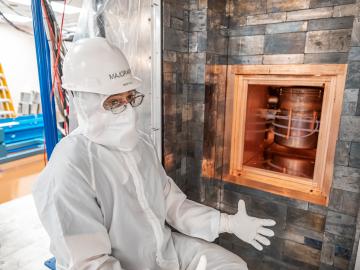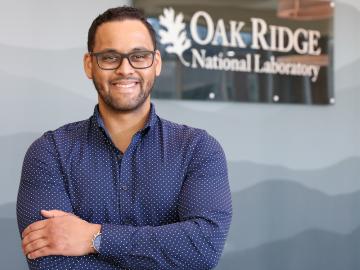
Filter News
Area of Research
- (-) Materials (79)
- Advanced Manufacturing (11)
- Biological Systems (2)
- Biology and Environment (44)
- Computer Science (1)
- Energy Science (78)
- Energy Sciences (1)
- Fusion and Fission (8)
- Fusion Energy (9)
- Isotopes (4)
- Materials for Computing (15)
- National Security (6)
- Neutron Science (25)
- Nuclear Science and Technology (10)
- Nuclear Systems Modeling, Simulation and Validation (1)
- Quantum information Science (2)
- Supercomputing (36)
- Transportation Systems (1)
News Type
News Topics
- (-) Advanced Reactors (2)
- (-) Bioenergy (3)
- (-) Composites (6)
- (-) Energy Storage (13)
- (-) Materials (31)
- (-) Materials Science (36)
- (-) Physics (12)
- 3-D Printing/Advanced Manufacturing (10)
- Artificial Intelligence (4)
- Big Data (2)
- Biomedical (4)
- Buildings (2)
- Chemical Sciences (11)
- Clean Water (3)
- Computer Science (9)
- Coronavirus (2)
- Critical Materials (5)
- Cybersecurity (1)
- Environment (7)
- Exascale Computing (1)
- Fusion (4)
- Grid (2)
- High-Performance Computing (1)
- Isotopes (8)
- Machine Learning (2)
- Mathematics (1)
- Microscopy (12)
- Molten Salt (1)
- Nanotechnology (16)
- Neutron Science (13)
- Nuclear Energy (12)
- Partnerships (3)
- Polymers (10)
- Quantum Computing (2)
- Quantum Science (1)
- Security (1)
- Space Exploration (2)
- Summit (1)
- Transportation (10)
Media Contacts

Scientists at ORNL developed a competitive, eco-friendly alternative made without harmful blowing agents.

Alice Perrin is passionate about scientific research, but also beans — as in legumes.

For nearly six years, the Majorana Demonstrator quietly listened to the universe. Nearly a mile underground at the Sanford Underground Research Facility, or SURF, in Lead, South Dakota, the experiment collected data that could answer one of the most perplexing questions in physics: Why is the universe filled with something instead of nothing?

A scientific instrument at ORNL could help create a noninvasive cancer treatment derived from a common tropical plant.

Warming a crystal of the mineral fresnoite, ORNL scientists discovered that excitations called phasons carried heat three times farther and faster than phonons, the excitations that usually carry heat through a material.

When Addis Fuhr was growing up in Bakersfield, California, he enjoyed visiting the mall to gaze at crystals and rocks in the gem store.

ORNL researchers have identified a mechanism in a 3D-printed alloy – termed “load shuffling” — that could enable the design of better-performing lightweight materials for vehicles.

The U.S. Departments of Energy and Defense teamed up to create a series of weld filler materials that could dramatically improve high-strength steel repair in vehicles, bridges and pipelines.

Scientists have measured the highest toughness ever recorded, of any material, while investigating a metallic alloy made of chromium, cobalt and nickel, or CrCoNi.

The presence of minerals called ash in plants makes little difference to the fitness of new naturally derived compound materials designed for additive manufacturing, an Oak Ridge National Laboratory-led team found.


